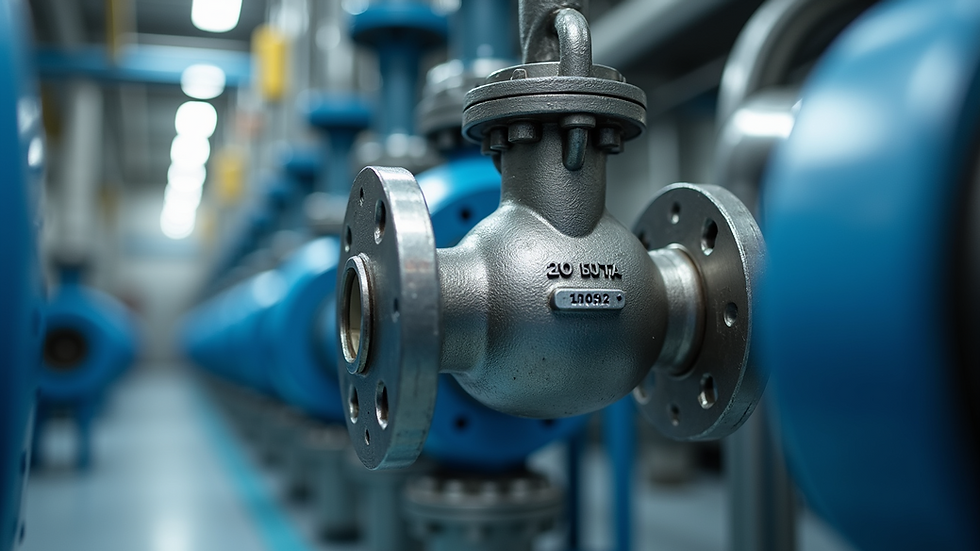Understanding the Different Types of Industrial Valves
- Mark Richardson
- Jun 17
- 3 min read
Valves play a crucial role in various industrial applications. They regulate, direct, or control the flow of fluids (liquids, gases, or slurries) by opening, closing, or partially obstructing passageways. This post aims to explore the different types of industrial valves, their functionality, and their applications.
Industrial Valves: A Quick Overview
Industrial valves are mechanical devices that control the flow and pressure within a system. They can be found in various industries, including oil and gas, water treatment, chemical manufacturing, and power generation. Understanding the distinct types of industrial valves is essential for selecting the right one based on your operational needs.
Valves can be classified based on their function, design, or application. The most commonly used industrial valves include gate valves, globe valves, ball valves, and butterfly valves.

Gate Valves
Gate valves are primarily used for on/off control. They allow for full flow when fully opened and provide minimal resistance to flow. This makes them ideal for applications where the valve remains either completely open or completely closed.
Advantages and Disadvantages
One significant advantage of gate valves is the low flow resistance. However, they are not suitable for throttling purposes, as partially opening a gate valve can cause erosion and damage the valve over time.
Applications
Gate valves are commonly used in water supply, wastewater treatment, and pipeline systems. They are especially useful when there is a need for isolation and minimal pressure drop.

Globe Valves
Globe valves are designed to regulate flow in a pipeline. They feature a spherical body with an internal baffle that causes the flow to change direction. This design allows for better control over flow rates compared to gate valves.
Advantages and Disadvantages
A globe valve provides excellent throttling capability but has higher flow resistance than gate valves. As a result, it may not be the best choice for applications that require minimal flow restrictions.
Applications
Globe valves are frequently used in heating systems, cooling systems, and fuel systems where variable flows are necessary.
Butterfly Valves
Butterfly valves are quarter-turn valves with a circular disc that pivots in the center of the pipe. This design allows them to quickly open and close, making them ideal for regulating flow in large pipes.
Advantages and Disadvantages
Butterfly valves are generally lightweight and compact, making them easy to install and operate. However, their sealing capabilities are not as robust as other valve types, which can lead to leakage. For applications where tight sealing is essential, a well-designed, larger size, like a 4 inch butterfly valve, may be a better solution.
Applications
Common applications for butterfly valves include HVAC systems, waste treatment facilities, and various process control industries due to their efficiency and cost-effectiveness.

Ball Valves
Ball valves consist of a hollow, perforated, and pivoting ball that controls flow. They can be fully opened or fully closed and are known for providing a tight seal when closed.
Advantages and Disadvantages
Ball valves offer a reliable shut-off and minimal flow resistance. However, they may not be suitable for throttling, as partially opening a ball valve can lead to uneven wear and potential damage.
Applications
These valves are widely used in applications requiring quick shut-off capabilities, such as natural gas lines, water pipelines, and hydraulic systems.
Conclusion: Choosing the Right Valve for Your Needs
Selecting the appropriate industrial valve is crucial for ensuring optimal system performance. Factors such as flow control, pressure rating, and material compatibility should guide your choices. Whether you need a gate valve for isolation, a globe valve for flow regulation, a butterfly valve for efficient operation, or a ball valve for quick shut-off, understanding the characteristics of each type will help you make informed decisions.
Understanding the different types of industrial valves allows for better system optimization and ensures that your operations run smoothly and efficiently.



Comments